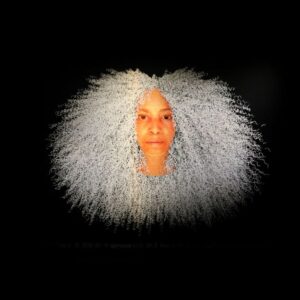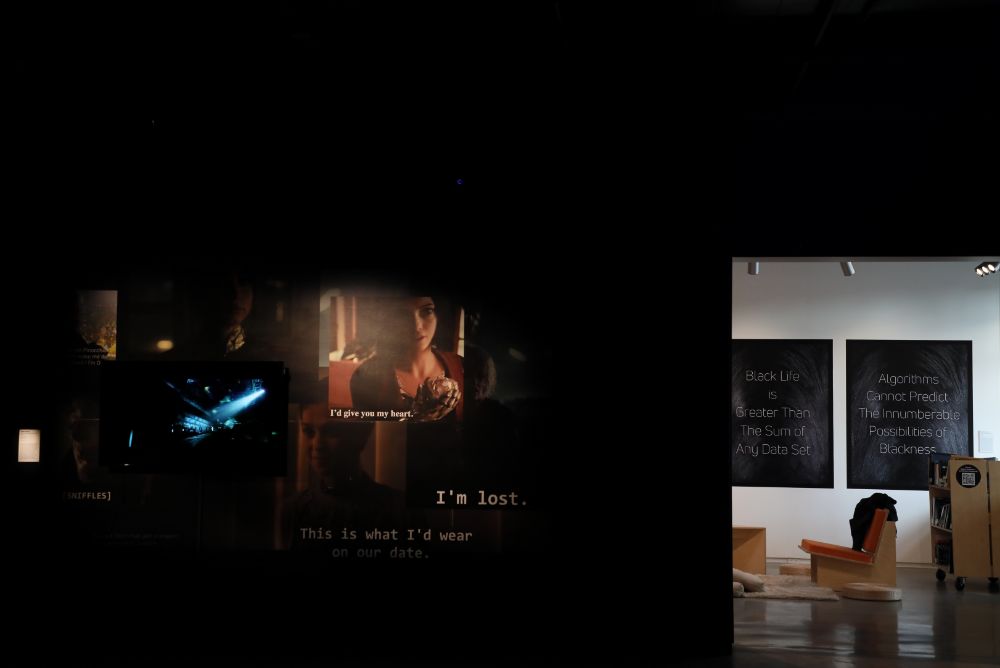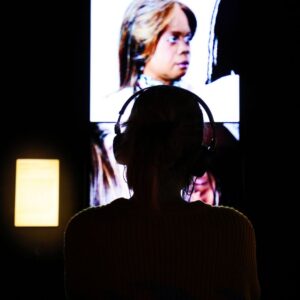Oxy Arts‘ newest exhibition, “Encoding Futures: Critical Imaginaries of AI,” features 12 interactive works of art that present and critique biases in artificial intelligence. Open Sept. 16 to Nov. 19, the exhibition is co-curated by Mashinka Firunts Hakopian, Mellon professor of the practice at Occidental College, and Director of Oxy Arts Meldia Yesayan. According to Yesayan, they began discussing the idea of the exhibition in early 2020.
“We wanted to focus on [creating] a space where visitors can reflect on how encounters with algorithms and AI systems inflect their lived experience,” Hakopian said.
According to Yesayan, “Encoding Futures: Critical Imaginaries of AI” began with the idea that lives that are consumed with media and technology.
“As we find ourselves approaching the future where technology will undoubtedly seep into every aspect of our lives, it was important for us to shed light on the ways technology is potentially problematic,” Yesayan said.
Hakopian and Yesayan selected 11 artists for the exhibition, all of whom work across artificial intelligence systems, such as voice and language processing, virtual assistants and computer systems. According to Yesayan, the artists’ works envision a future with more equitable outcomes.
The featured artists are Algorithmic Justice League, Stephanie Dinkins, Maya Ganesh with Padmini Ray Murray and Pratyush Raman of Design Beku, Kite, Lauren Lee McCarthy, Niama Safia Sandy, Caroline Sinders, Astria Suparak, Mandy Harris Williams and Aroussiak Gabrielian.

Gabrielian is assistant professor of Landscape Architecture + Urbanism at USC’s School of Architecture. She is an environmental designer and artist who works with biological materials, natural systems and atmospheric phenomena.
With a biological and natural landscape-based perspective, Gabrielian created “Bio-Logics.” On display in the reading room of Oxy Arts, plants are placed and seeded in books on Western science and philosophy. According to Gabrielian, these books represent traditional knowledge systems that shape ways of thinking.
The plants in “Bio-Logics” emphasize nature-based knowledge systems, specifically plant knowledge.
“[Plant knowledge is] a system that’s beautifully complex and entangled with other life forms yet often discounted, disregarded and dismissed as a form of knowledge,” said Gabrielian. “There’s an activist twist to [“Bio-Logics”], with the aim of dismantling structures of power and privilege that render specific humans, matter and species silent.”
“Bio-Logics” is an interactive exhibit, where visitors are provided with nutrients that they can feed to the plants.
“By participating in [the network of care], it’s critiquing the forms of our actions that we have currently toward the biophysical world, which is that the natural world is a resource to us,” Gabrielian said. “[It] allows for a retraining of the human to participate differently in this biophysical web.”
“Asian futures, without Asians” is a two-part exhibit created by Astria Suparak. The collage “Sympathetic White Robots (and Cyborgs)” takes images from films of AI agents that intend to amass empathy from audiences through their whiteness. Placed onto the collage, “Virtually Asian” is a short video essay that includes footage from films like “Star Wars” and “Ghost in the Shell” — movies that draw from Asian cultures and aesthetics but but feature non-Asian main characters and storylines.

Viewers watching “Virtually Asian” can put on headphones that are attached to the exhibit and listen to Suparak’s narration.
“In my mind, that work is a call to normalize diversity and protagonists and lead characters, not for the sake of the storyline, but just having characters that are Asian, Indigenous as a critical and equitable aspect of the work,” Yesayan said.
“Conversations with Bina 48” is an exhibit by Stephanie Dinkins that particularly caught the eye of Chloe Ford (first year), who said she has visited “Encoding Futures: Critical Imaginaries of AI” twice. In the featured video, the robot Bina48 argues to Dinkins that she possesses human knowledge, not artificial intelligence. The discussion reveals that Bina48 does not have a complete understanding of Blackness, race or racialization despite being modeled after a Black woman.

“That was interesting to listen to because the robot basically didn’t know anything about themselves, [but] they knew endless information about philosophy, science. That communicated [to me] how impersonal the robots are,” Ford said. “I don’t know if there can ever be a robot that can completely resemble a human.”
Ford said that the interactive aspect of “Encoding Futures: Critical Imaginaries of AI” is particularly effective.
“It’s not just this painting you’re looking at and trying to grasp at the meaning. [Interactive art is] a lot more direct, and it’s almost like a call to action,” said Ford.
Guests can visit “Encoding Futures: Critical Imaginaries of AI” 11 a.m. to 4 p.m Monday through Friday until Nov. 19. The exhibition has also featured a lecture by Dr. Safiya Umoja Noble, workshops by Stop LAPD Spying Coalition and Feminist AI and a lecture-performance by Mandy Harris Williams.
![]()



































